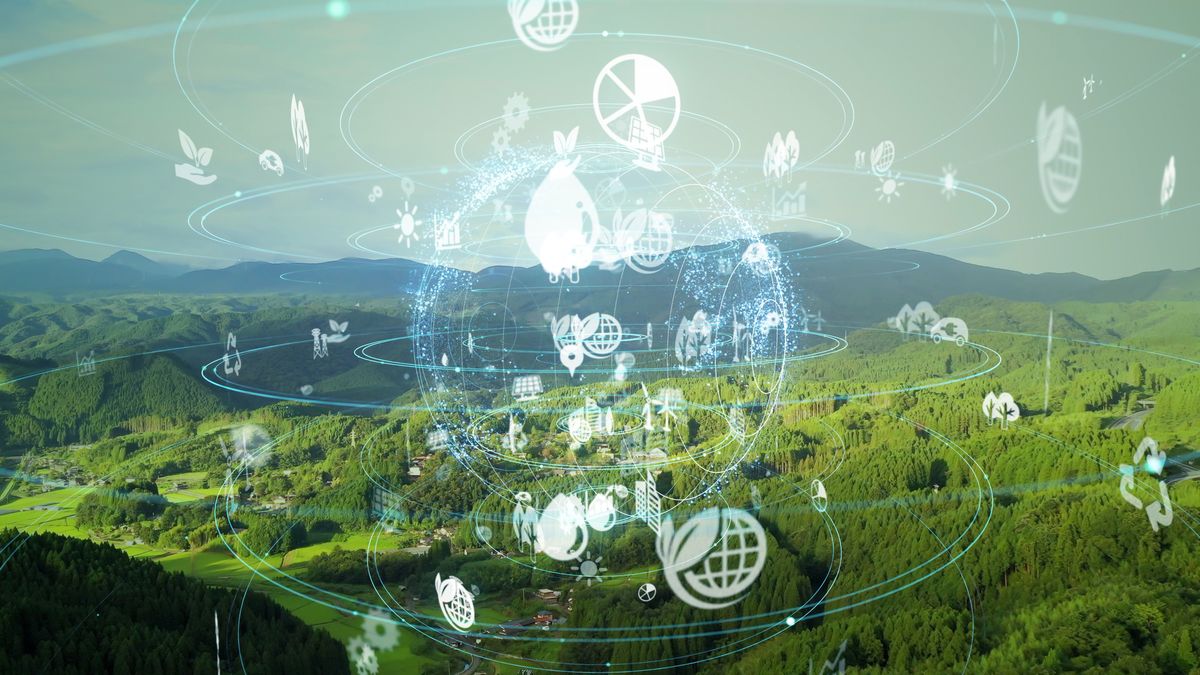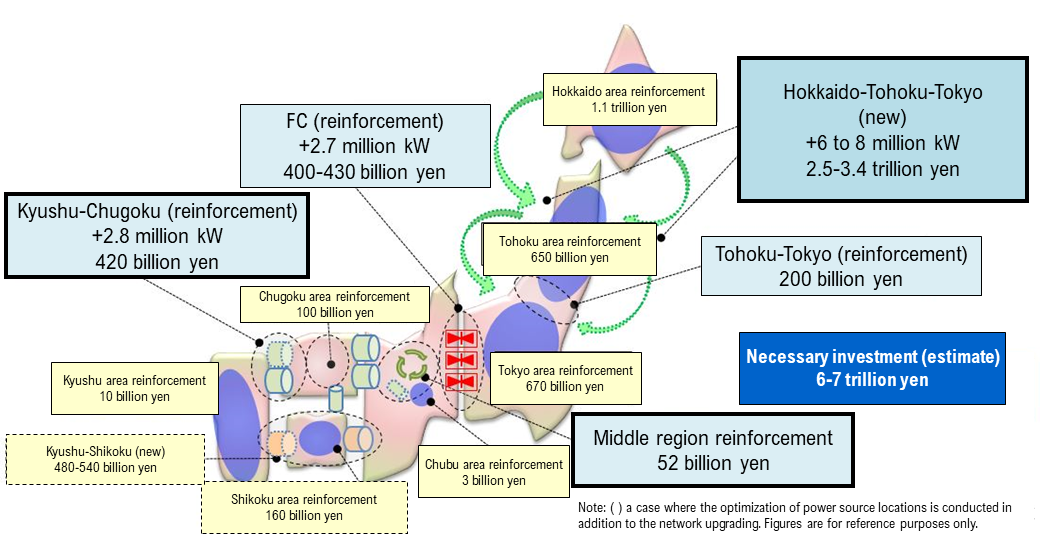Japan’s energy policy toward achieving GX (Part 1)
Decarbonization will be advanced on the premise of securing a stable supply of energy
(in provisional translation)
(English ver.) 2023-05-02

The Basic Policy for the Realization of GX was compiled on December 22, 2022, depicting a roadmap for energy and environmental policies covering the next 10 years. This basic policy advocates thorough energy efficiency improvement and utilization of clean energy such as renewables and nuclear power toward securing a “stable supply of energy” and promoting “transition to a decarbonized society while achieving economic growth.” It also proposes a concrete policy package for achieving those goals. As the energy situation is changing globally, we will outline the direction of Japan’s energy and environmental policies in a series of 2 articles (Part 1 and Part 2.)
“A stable supply of energy,” “economic growth” and “decarbonization” in the basic policy
“GX” in the basic policy refers to Green Transformation, which means transition from the fossil-fuel (such as coal and oil)-centered industrial and social structure to a clean-energy (with no CO2 emissions)-centered one.
The realization of a decarbonized society is a global challenge. The transition to clean energy is crucial for Japan as it has made a commitment to the international community to achieve carbon neutrality by 2050.
However, since February 2022 when the Russian aggression against Ukraine started, the international energy situation has changed dramatically. Coupled with the spread of COVID-19, energy prices are surging globally. Japan is no exception, experiencing a tight supply and demand situation of electricity and higher energy prices. Japan, as a country with limited energy resources, has recognized anew the importance of securing a stable supply of energy.
Therefore, the most critical challenges facing us are to change our energy supply and demand structure toward simultaneously realizing a decarbonized society and a stable supply of energy, and also to realign our economy on an upward trajectory. The Basic Policy for the Realization of GX states that Japan needs to utilize the technologies related to decarbonization in which it has strengths, and enhance its industrial competitiveness and achieve economic growth. It also stresses the importance of making all-out efforts to reduce CO2 emissions.
The basic policy consists of two main sections, namely:
-
 [Energy policy] Efforts to realize decarbonization toward GX on the premise of securing a stable supply of energy
[Energy policy] Efforts to realize decarbonization toward GX on the premise of securing a stable supply of energy
-
 [Method of advancing GX] Formulating a policy package to advance the “growth-oriented carbon pricing initiative” which will simultaneously achieve economic growth and decarbonization
[Method of advancing GX] Formulating a policy package to advance the “growth-oriented carbon pricing initiative” which will simultaneously achieve economic growth and decarbonization
This article (Part 1) highlights salient points of the energy policy.
Decarbonization efforts toward GX on the major premise of securing a stable supply of energy.
A stable, inexpensive supply of energy is essential to maintaining our lifestyles and safeguard our social/economic activities. Toward securing a stable supply of energy, relying on emergency mitigation measures designed to cope with short-term uncertainties is insufficient. From the long-term perspective, it is important to fundamentally change our energy supply and demand structure to endure potential energy crises. The same applies to a path to decarbonization.
The following efforts are proposed in the plan toward decarbonization while restructuring the mechanisms that are necessary to secure a stable supply of energy.
Energy efficiency improvement and transformation of the manufacturing industry
The first step toward realizing a decarbonized society is to reduce energy consumption.
In the household sector, subsidies will be provided for energy-saving renovations including the installation of insulated windows, the purchase of electric appliances with higher energy efficiency, and similar activities suited to regional situations. In the business sector, companies are encouraged to disclose information on their energy consumption with a view toward the transition to non-fossil energy. It is also recommended that they establish energy saving goals in an effort to develop/introduce cutting-edge technologies and sophisticated production systems under the Revised Act on Rationalizing Energy Use. We will provide comprehensive support for these efforts by businesses.
Making renewable energy a main decarbonized source of electricity generation
Toward further expansion of the introduction of renewable energy, the nationwide power system (integrating power stations, substations, and transmission/distribution lines) will be upgraded. In particular, the reinforcement of cross-regional transmission lines will be accelerated. The next ten years will see an eight-fold increase in capacity compared to the capacity added in the past ten years. The largest project is to construct underwater direct-current transmission lines between Hokkaido and Honshu. This project, aiming to be commissioned by FY2030, will directly connect Hokkaido, with its large potential for renewables, and Honshu, where the majority of electricity demand exists.
Upgrading nationwide power transmission networks (long-term prospect for formulating a master plan (draft))

(Source) Created by the administrative staff based on the material distributed in the 21st meeting of the Committee for a Master Plan of Nation-wide Power Transmission Networks and Proper Utilization Rules
Utilization of nuclear power as a highly decarbonized power source
Nuclear power is a highly self-reliant power source with stable output. It plays an important role as a baseload power source toward decarbonization, which is capable of supplying electricity in a stable manner irrespective of season, weather, or time of day. We will advance the restart of nuclear power stations on the major premise of securing safety.
We will maintain the existing rule of the maximum operation period being 60 years, i.e., 40 years plus the permissible extension of 20 years. However, in order to ensure maximum utilization of the existing nuclear power units, it has been decided that certain periods, albeit with some limitations, shall not be categorized as operational periods, for example, periods of time when the unit is out of operation due to changes in safety regulations or provisional disposition injunctions by the court. It is, of course, on condition that the unit in question passes the strict safety examination by the Nuclear Regulation Authority.
Additionally, the development of next-generation advanced reactors equipped with new safety mechanisms will be promoted so that they will be constructed within the sites of power stations that are to be decommissioned, replacing the old units.
Furthermore, we will advance the introduction of decarbonized fuels such as hydrogen and ammonia. We will also develop and increase the sophistication of electricity and gas markets toward achieving carbon neutrality. Moreover, each industrial sector will be encouraged to establish its goal for GX and make efforts toward achieving them.
Part 2 of this article will highlight an initiative called the “growth-oriented carbon pricing” as a concrete measure toward promoting GX.
Division in charge
About the article
Policy Planning and Coordination Division, Commissioner’s Secretariat, ANRE
Environmental Policy Division, Industrial Science and Technology Policy and Environment Bureau, METI
About Special Contents
Research and Public Relations Office, Commissioner’s Secretariat, ANRE
![]() The original Japanese text of this article; Click here
The original Japanese text of this article; Click here